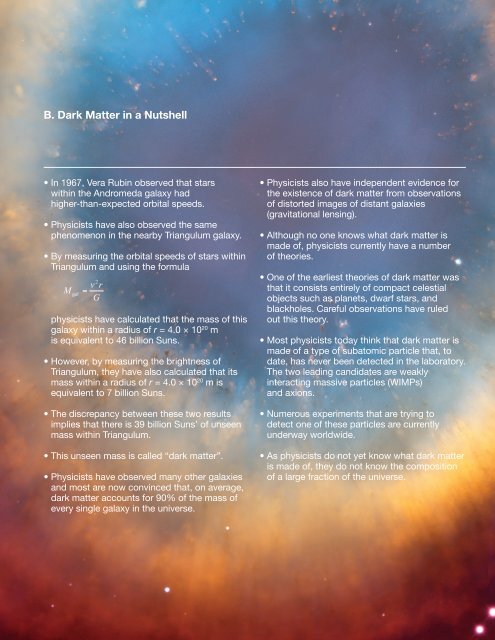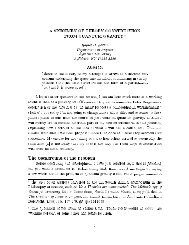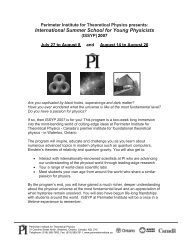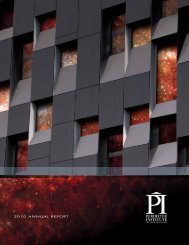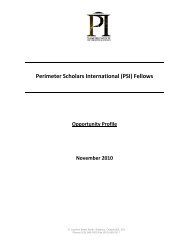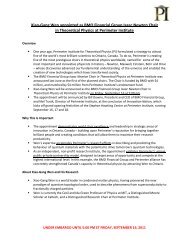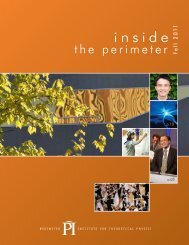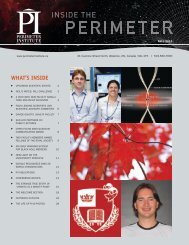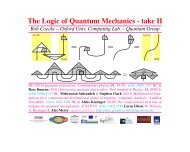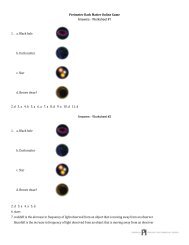Dark Matter Teacher Guide - Perimeter Institute
Dark Matter Teacher Guide - Perimeter Institute
Dark Matter Teacher Guide - Perimeter Institute
You also want an ePaper? Increase the reach of your titles
YUMPU automatically turns print PDFs into web optimized ePapers that Google loves.
B. <strong>Dark</strong> <strong>Matter</strong> in a Nutshell<br />
• In 1967, Vera Rubin observed that stars<br />
within the Andromeda galaxy had<br />
higher-than-expected orbital speeds.<br />
• Physicists have also observed the same<br />
phenomenon in the nearby Triangulum galaxy.<br />
• By measuring the orbital speeds of stars within<br />
Triangulum and using the formula<br />
physicists have calculated that the mass of this<br />
galaxy within a radius of r = 4.0 × 10 20 m<br />
is equivalent to 46 billion Suns.<br />
• However, by measuring the brightness of<br />
Triangulum, they have also calculated that its<br />
mass within a radius of r = 4.0 × 10 20 m is<br />
equivalent to 7 billion Suns.<br />
• The discrepancy between these two results<br />
implies that there is 39 billion Suns’ of unseen<br />
mass within Triangulum.<br />
• This unseen mass is called “dark matter”.<br />
• Physicists have observed many other galaxies<br />
and most are now convinced that, on average,<br />
dark matter accounts for 90% of the mass of<br />
every single galaxy in the universe.<br />
• Physicists also have independent evidence for<br />
the existence of dark matter from observations<br />
of distorted images of distant galaxies<br />
(gravitational lensing).<br />
• Although no one knows what dark matter is<br />
made of, physicists currently have a number<br />
of theories.<br />
• One of the earliest theories of dark matter was<br />
that it consists entirely of compact celestial<br />
objects such as planets, dwarf stars, and<br />
blackholes. Careful observations have ruled<br />
out this theory.<br />
• Most physicists today think that dark matter is<br />
made of a type of subatomic particle that, to<br />
date, has never been detected in the laboratory.<br />
The two leading candidates are weakly<br />
interacting massive particles (WIMPs)<br />
and axions.<br />
• Numerous experiments that are trying to<br />
detect one of these particles are currently<br />
underway worldwide.<br />
• As physicists do not yet know what dark matter<br />
is made of, they do not know the composition<br />
of a large fraction of the universe.<br />
7


